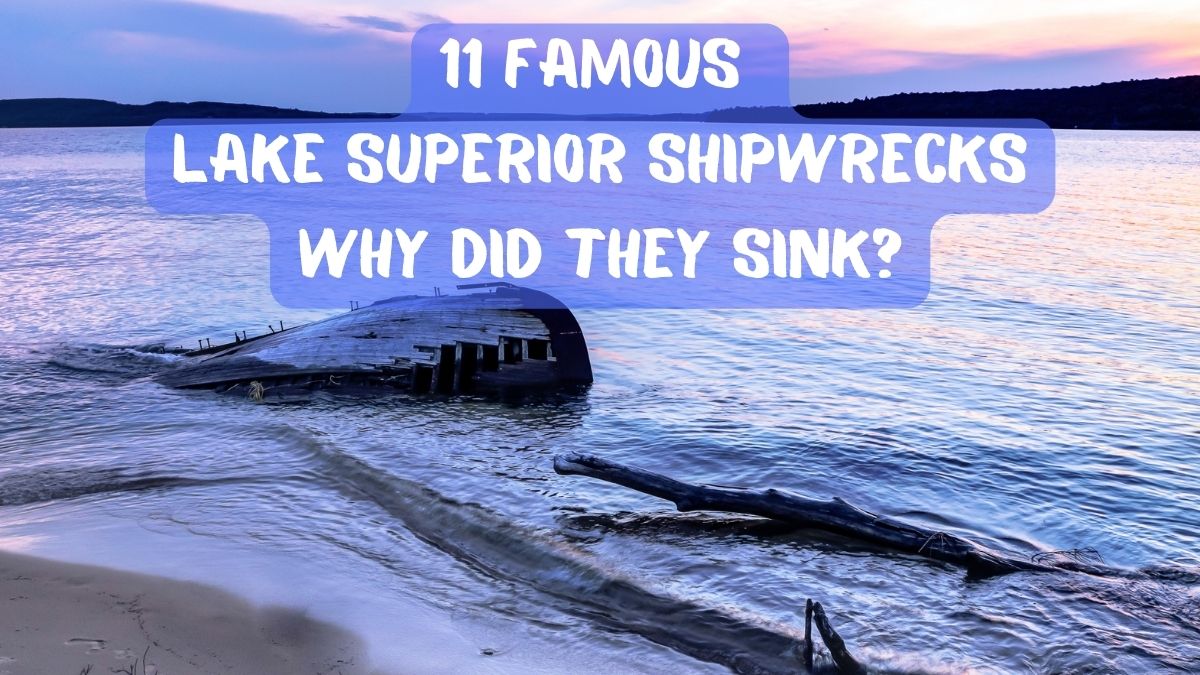Lake Superior has made headline news over the last two centuries because of the number of shipwrecks that have gone down in her waters. It is estimated that 550 ships are lying at the bottom of Lake Superior. Wind, snow, ice, fog, and fire are the culprits, to name a few of why so many ships have sunk beneath the waters of Lake Superior.
There also are several famous shipwrecks lying at the bottom of this wondrous Great Lake that we will explore in this article Famous Lake Superior Shipwrecks. If you are interested in Lake Superiors shipwrecks, you will want to read on as we examine eleven of Lake Superior’s most famous shipwrecks.
11 Famous Lake Superior Shipwrecks
| Ship Name | Date of Disaster | Loss of Life | Coordinates |
|---|---|---|---|
| Edmund Fitzgerald | November 10, 1975 | 29 | 46° 59′ 54.6″ N, 85° 6′ 36.6″ W |
| SS Chester A. Congdon | November 08, 1918 | 0 | 48° 11′ 36″ N, 88° 30′ 52″ W |
| The Niagara | June 04, 1904 | 0 | 46° 56′ 44.71″ N, 91° 46′ 16.48″ W |
| SS Scotiadoc | June 20, 1953 | 0 | 48° 16′ 0″ N, 88° 54′ 0″ W |
| The Gunilda | August 11, 1911 | 0 | 48° 47′ 3″ N, 87° 25′ 20″ W |
| SS Kamloops | December 07, 1927 | 22 | 48° 5′ 6″ N, 88° 45′ 53″ W |
| SS Henry B. Smith | November 10, 1913 | 25 | 46° 54′ 50.4″ N, 87° 19′ 58.8″ W |
| SS D.M. Clemson | December 01, 1908 | 24 | UNKNOWN |
| SS M.M. Drake | December 02, 1901 | 1 | 46° 46′ 35.28″ N, 85° 5′ 55.98″ W |
| SS Cypress | October 11, 1907 | 22 | 46° 47′ 24″ N, 85° 36′ 0″ W |
| SS Bannockburn | November 21, 1902 | 20 | UNKNOWN |
The Edmund Fitzgerald
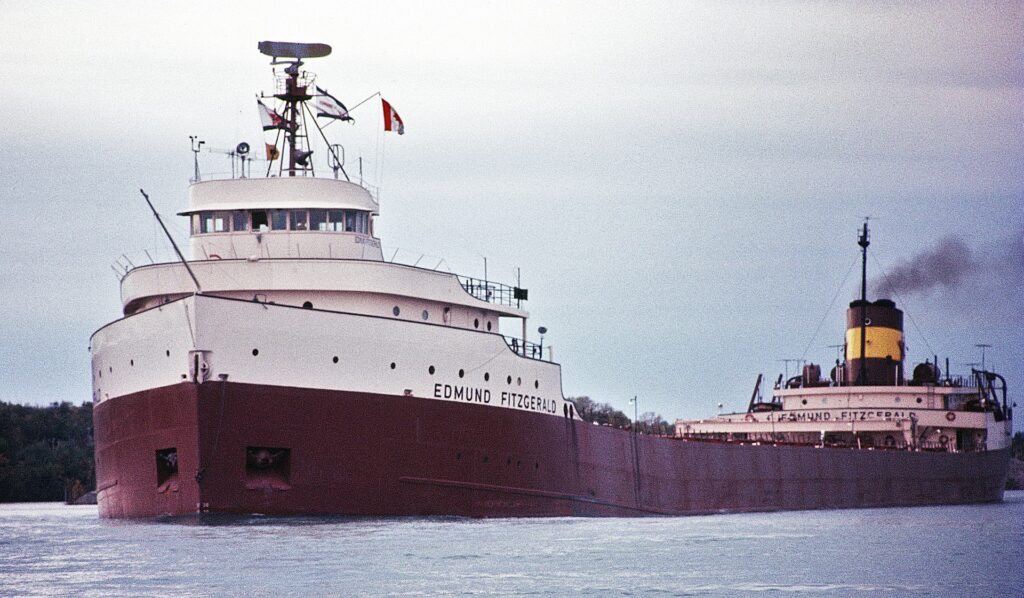
The most notable of the shipwrecks in Lake Superior would be Edmund Fitzgerald. There was even a song named after this wreck by Gordon Lightfoot, named the “wreck of the Edmund Fitzgerald.” This shipwreck is the most recent of the shipwrecks on our list.
The Edmund Fitzgerald was built in 1957/58 and was launched on June 07, 1958. She was named after the owner of the Northwest Mutual Insurance Company who was the owners, which the Columbia Transportation Division operated. She is the largest ship to sink in the Great Lakes.
On November 9, 1975, The Edmund Fitzgerald departed the Burlington Northern Railroad Dock No.1 in Superior, Wisconsin, after Captain Ernst M. McSorley loaded her hulls with 26,116 tons of taconite ore pellets. A November storm was brewing that Captain McSorley was aware of, so he, along with the Captain of the Arthur M. Anderson, another ship close behind her, decided to take a northern route of Lake Superior where they would seek the cover of the highlands on the Canadian Shores.
The Edmund Fitzgerald turned southeast to try and make it to Whitefish Point, but they never made it. The waves on Lake Superior on November 10, 1975, were estimated to be as high as 25 feet. She sank to a watery grave with all 29 crew members lost.
The Edmund Fitzgerald is Found
The Coast Guard not conclusively, mind you, determined that the cause of the sinking of the Edmund Fitzgerald was the result of her cargo holds taking on water from the high seas. On May 20, 1976, the Navy found the Edmund Fitzgerald upside down 533 feet below the waters of Lake Superior.
In 1995 the ship’s bell was retrieved and is now in the Great Lakes Shipwreck Museum on Whitefish Point in Paradise, Michigan.
SS Chester A. Congdon
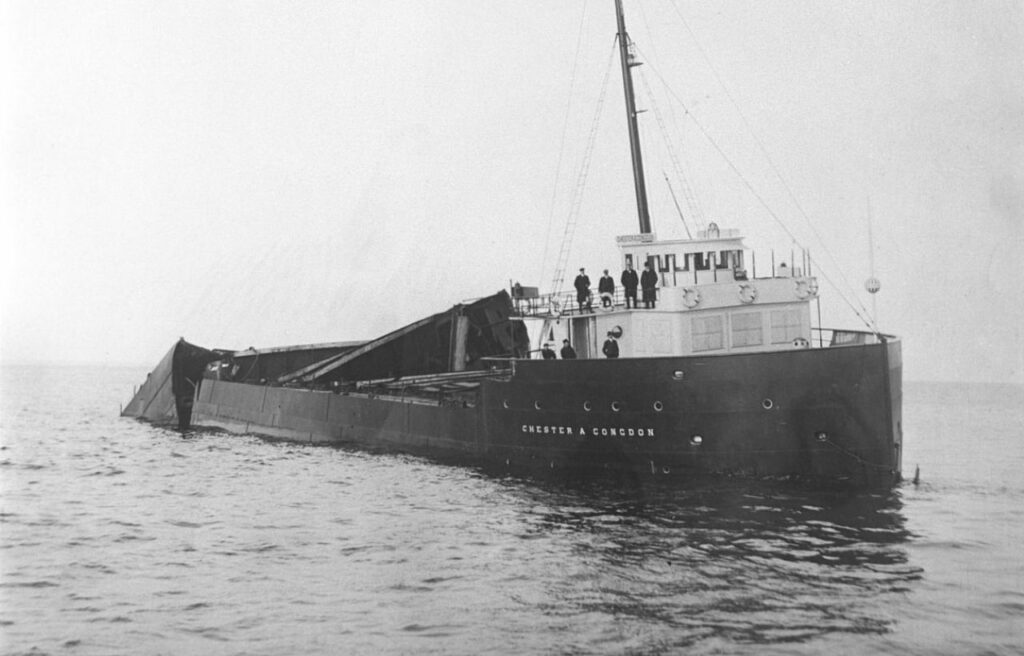
The SS Chester A. Congdon was initially named Salt Lake City but later changed in honor of its owner, prominent Duluth, Minnesota lawyer and entrepreneur Chester A. Congdon. Mr. Congdon was the owner of the Glensheen Mansion in Duluth, Minnesota, which is now a tourist attraction because of murders that took place there.
On November 06, 1918, SS Chester A. Congdon left Fort William, Ontario, with a cargo of 380,000 bushels of wheat and headed to Port McNicoll, Ontario. Soon after her departure, a huge November storm was brewing as she passed Thunder Cape, and dense fog set in on Lake Superior.
A fog signal came from Passage Island to warn the ships in the area, but Chester A. Congdon’s crew didn’t hear it, and they ran aground on Canoe Rocks on the northwest of Isle Royal. She broke in two, with her stern sinking first. Lifeboats were lowered, and they went to Passage Island to get help.
They tried to remove some of the grain cargo in hopes that she would bounce back up, but another storm throated their efforts, and when they came back from sheltering at Isle Royal, the stern had sunk she was considered a total loss. Fortunately, because she sank so slowly, no lives were lost in this wreck.
She now lies 20 to 200 feet down near Isle Royal and is the largest ship ever sunk in this area of Lake Superior.
The Niagara
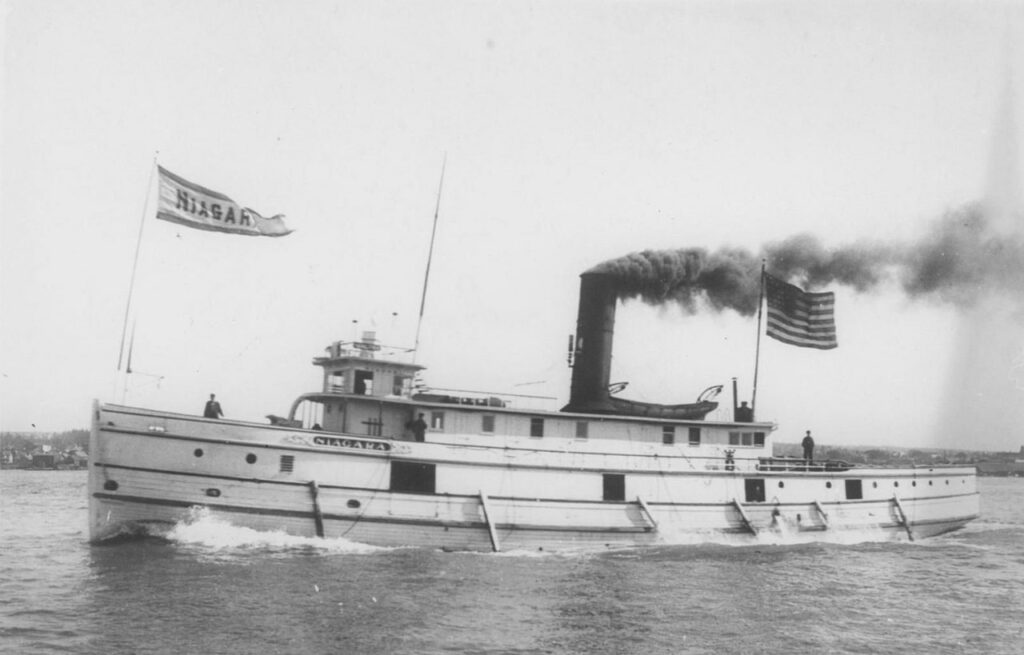
The Niagara was one of only two rafting tugboats used for Minnesota’s logging industry in that part of Lake Superior. She crashed into the rocks near the shore of Knife Island on June 04, 1904. A storm had suddenly encompassed the ship, and her compass and navigational system ceased to work.
That day she was leaving Duluth port in Minnesota, hauling some heavy commercial equipment to Lake Huron before she sank into the waters of Lake Superior. Fortunately, the steel tug Edna G rescued all 11 of her crew and two passengers.
She now lies in four sections near the shores of Knife Island. On April 14, 1994, the Niagara was listed on the National Register of Historic Places.
SS Scotiadoc
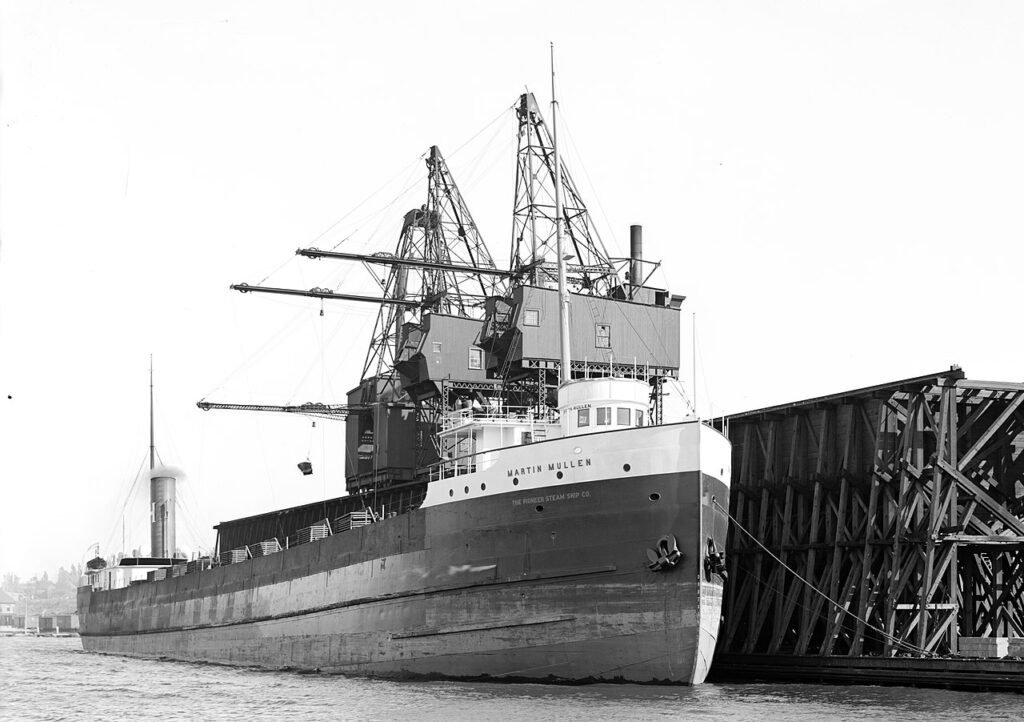
The 424-foot-long Great Lakes Freighter, the SS Scotiadoc, originally named Martin Mullen, was hit in dense fog by the Canadian Steamer the Burlington on June 20, 1953, near the shores of Trowbridge Island close to some mesa called the Sleeping Giants.
She was headed to Prescott, Ontario, when the collision took place. All crew members were saved except for one.
The SS Scotiadoc was located in 2013 by shipwreck hunters Jerry Eliason, Kraig Smith, and Ken Merryman. She is the deepest shipwreck in Lake Superior. She now lies at a depth of 850 feet.
The Gunilda
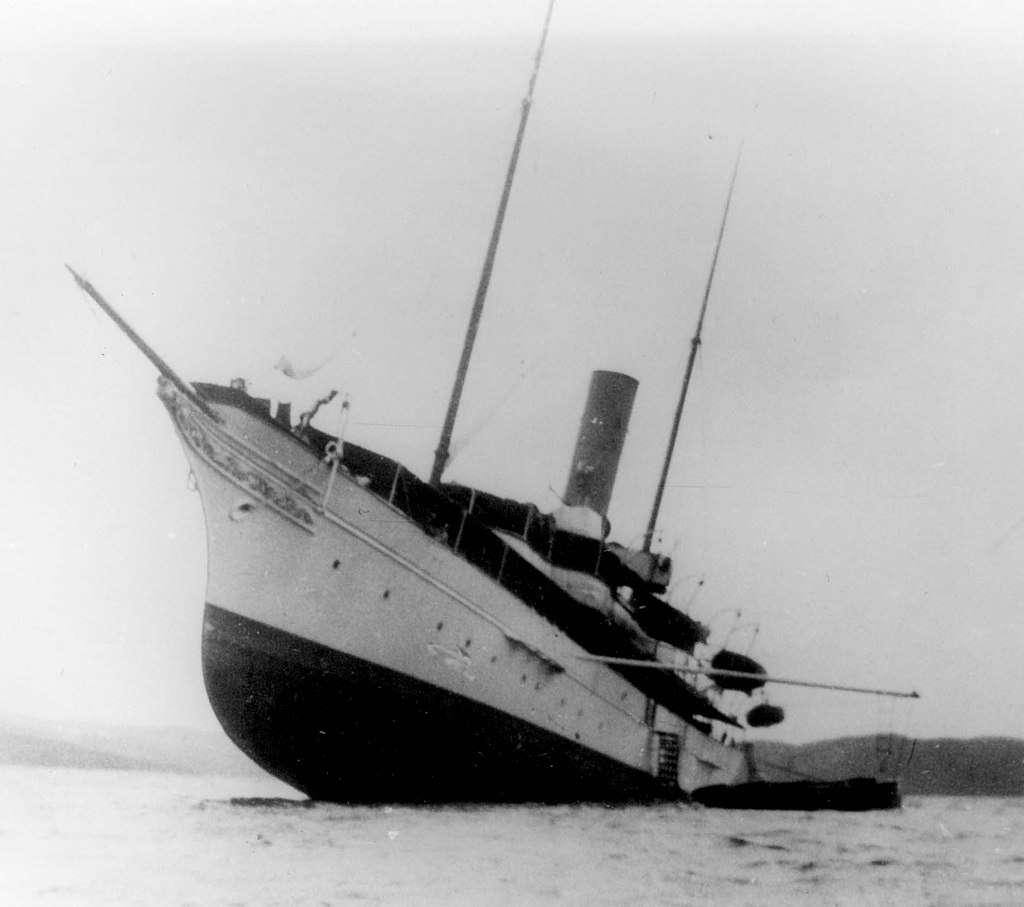
The Gunilda was a luxury yacht owned by William L. Harkness from New York. Because of his lack of navigational skills and reluctance to hire a boat captain, the Gunilda sank on August 11, 1911, near McGarvey Shoal, close to Rossport, Ontario.
Harkness made poor navigational decisions, leading the Gunilda to hit rocks in the McGarvey Shoals. As she started to take on the water, her passengers were all rescued and brought to safety. After refusing to pay a fee to an icebreaker tug to stabilize the Gunilda, it sank in the waters off Rossport, Ontario.
She was discovered fully intact in 270 feet of water in 1967. She is famous because, in 1980, Jacques Cousteau and the Cousteau Society filmed the wreck. They called it the “best-preserved, most prestigious shipwreck in the world.”
SS Kamloops
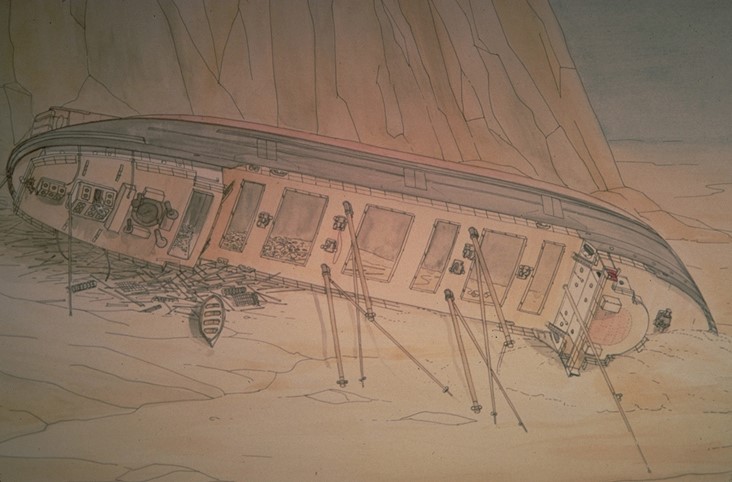
The SS Kamloops was a small 250-foot Canadian steam freighter launched in 1924. She was one of a fleet of Canadian Steamship lines. A massive storm had arisen on Lake Superior, coating the Kamloops with ice. She sank on December 7, 1927, while heading to the southeastern shore of Isle Royal. This was only three years after she was built.
Bodies and wreckage started to wash ashore at Twelve O’Clock Point on Isle Royale. In total, nine bodies were found, and only five of them were identified. The remaining four were buried at Thunder Bay with a memorial stone over their graves.
In December of 1928, a message in a bottle was found by a trapper at the mouth of the Agawa River. Alice Bettridge wrote the note, one of the stewardesses aboard Kamloops at the time of its sinking. The message read, “I am the last one left alive, freezing and starving to death on Isle Royale in Lake Superior. I just want mom and dad to know my fate”. She had initially survived the wreck but died later.
All 22 people died that fateful day in the frigid waters of Lake Superior. Kamloops was lost for fifty years and was considered one of the Ghost Ships of the Great Lakes. But in August of 1977, northwest of Isle Royal. The area is now called Kamloops Point.
She was found by some shipwreck hunters that were diving looking for her. She now lies at a depth of 260 feet in the Isle Royal National Park at the bottom of Lake Superior. There are still human remains on the wreck. They never did determine the exact cause of her sinking.
SS Henry B. Smith
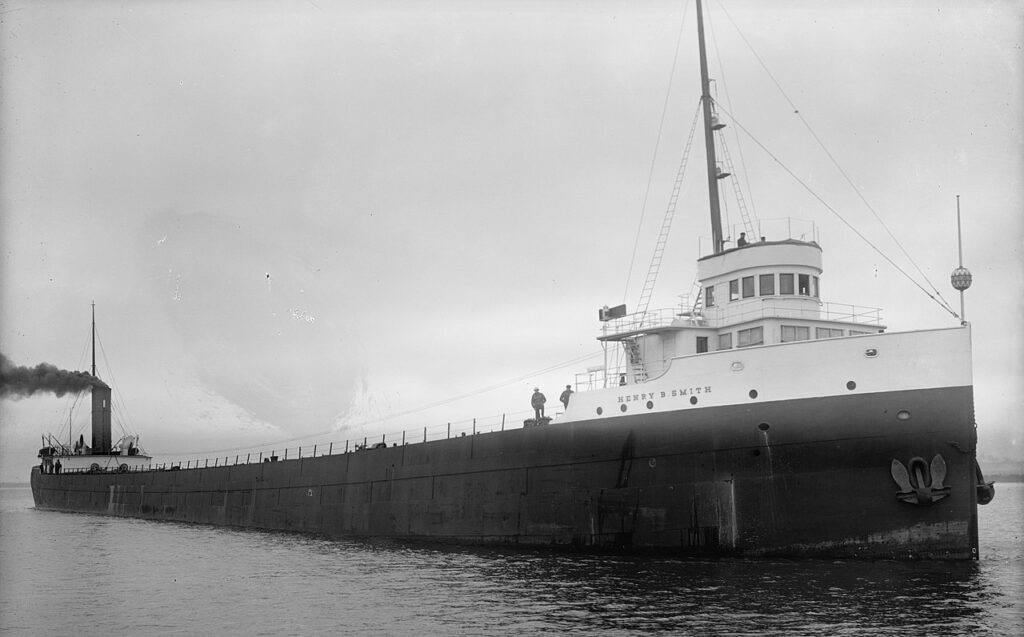
The SS Henry B. Smith sank on November 10, 1913, during the Great Lakes Storm of 1913. She was a steel-hulled Great Lakes Freighter built by the American Ship Building Company in Lorraine, Ohio, in 1906.
During that year, Captain James Owen had been late arriving at his destinations numerous times, and it was rumored that the boat owners told him that he better make this last trip on time. But he got delayed once again on November 06, 1913, when the ore was being loaded onto his ship was freezing in the Hopper cars, so the workers had to break it loose before loading it onto the ship.
On November 9, the SS Henry B. Smith finally left Marquette port during a lull in the storm. As soon as they were on their way, strong winds started wiping across Lake Superior, causing the crew of the Henry B. Smith to have to close its 32 hatches. Soon they were in the middle of the Great Lakes Storm of 1913.
Witnesses last saw Smith possibly trying to take shelter behind Keweenaw Point, but she never made it to safety. Only two bodies were recovered from the wreck. The rest presumably went down with the ship. The wreck of the Henry B. Smith was discovered in 2013 and now lies at a depth of 535 feet off the coast of Marquette, Michigan.
SS D.M. Clemson
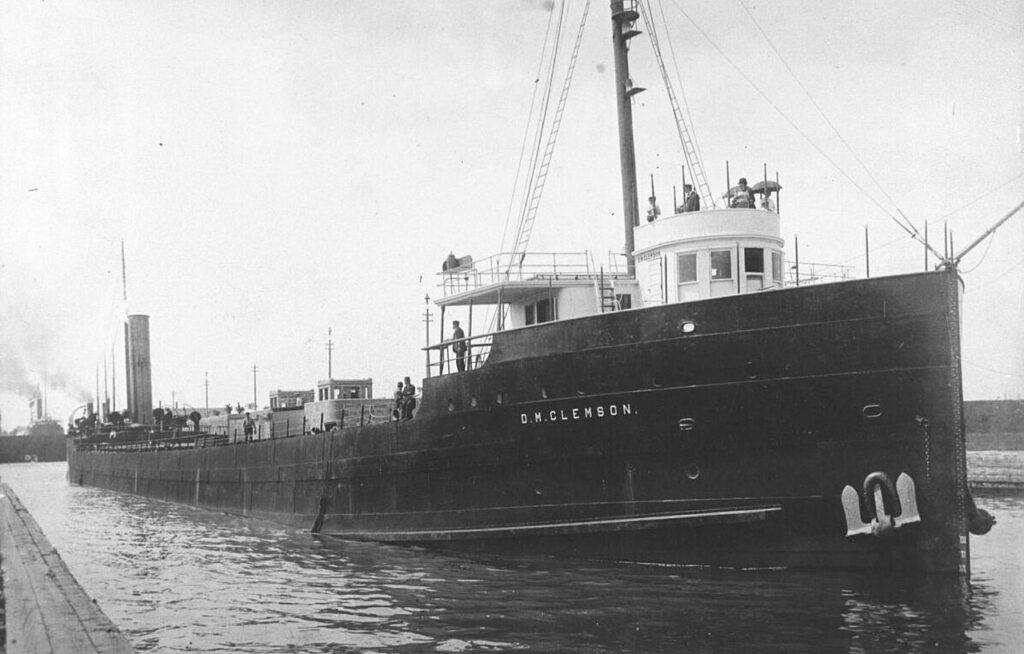
The SS D.M. Clemson was a steel-Hull Great Lakes Freighter that was launched on August 14, 1903. She was built by the Superior Shipbuilding Company and operated out port of Duluth, Minnesota, by Provident Steamship Company.
Clemson was last seen on the Sault Locks on the St. Marys River going into Lake Superior. She sank on December 01, 1908. A mystery surrounds this wreck because she hasn’t been located yet. Also, the cause of the sinking is unclear. But she did sustain damage to 10 of her hull plates and a water tank on her starboard side on October 20, 1908, when she smashed into a pier near the lighthouse in Ashtabula, Ohio. She was later repaired, but some believe the repairs didn’t hold, so she sank.
Twenty-four crew members lost their lives that day on Lake Superior. Bodies and pieces of the wreck started washing ashore between Crisp Point and Grand Marais for a few weeks after the disaster. Two bodies were recovered that washed ashore, including the watchman Simon Dunn and second mate Charles Woods. Three more bodies were seen floating west but were not picked up.
SS M.M. Drake
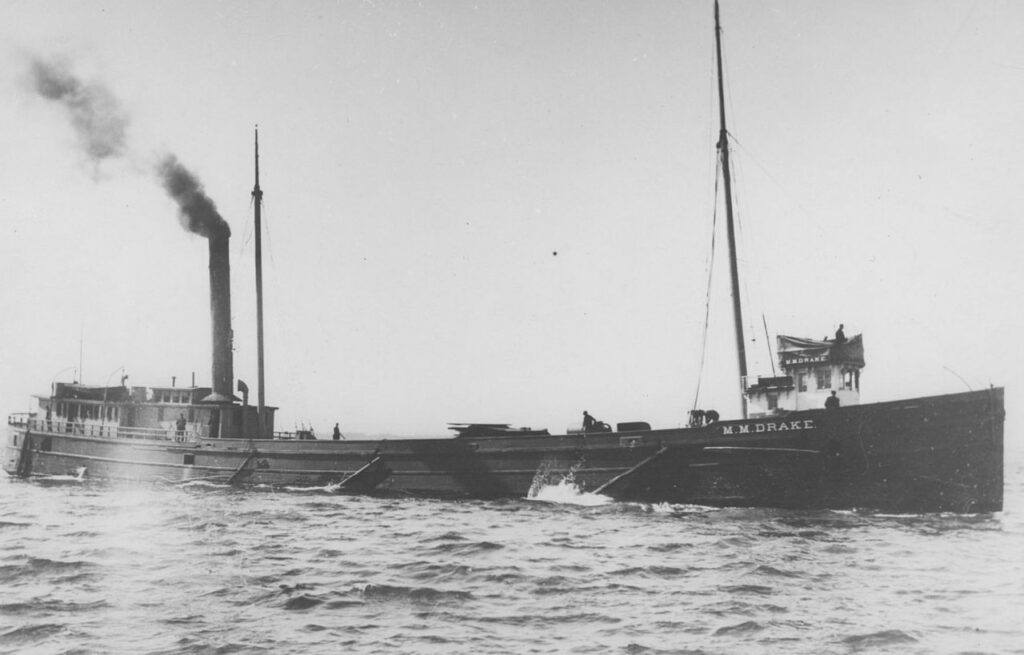
The SS M.M. Drake sank on October 02, 1901, off Vermillion Point in Lake Superior while she towed a schooner named Michigan. She was built in 1882 by the Union Dry Dock Company in Buffalo, New York, and was operated by John Greene.
During a storm, Drake towed her consort Michigan into Lake Superior, not realizing how bad things were about to become. The next day on October 02, the winds raged at 55mph with heavy freezing rain. The schooner Michigan that Drake was towing started to leak, and the pumps couldn’t keep up.
They decided to remove Michigan’s crew, so they drew Michigan’s bow up to Drake’s stern, and the crew members from Michigan jumped over to Drake. Soon after the Michigan crew made it onto the Drake, Michigan hit a sea trough and smashed into the Drake, causing widespread damage, including the loss of her smoke stack that fell into Lake Superior.
The Drake and Michigan Were Doomed
Without the use of her smokestack, the SS M.M. Drake was doomed. The Drake and Michigan then sank into the ice-cold waters of Lake Superior. Before they sank, the Cresent City, a steel freighter, came to the rescue and saved both the crews except for a cook from Michigan named Harry Brown, who jumped to the Cresent City before it was close enough to the Drake.
Michigan has never been found, but the SS M.M. Drake was discovered in 1978 by the Great Lakes Shipwreck Historical Society. In the 1980s, they illegally removed her rudder, anchor, windlass, and signboard. The state of Michigan now owns these artifacts, which are out on loan at the Great Lakes Shipwreck Museum.
The wreck of the Drake now lies about a half mile from Vermillion Point in the Whitefish Point Underwater Preserve. This is one of the many shipwrecks you can dive into in this area.
SS Cyprus
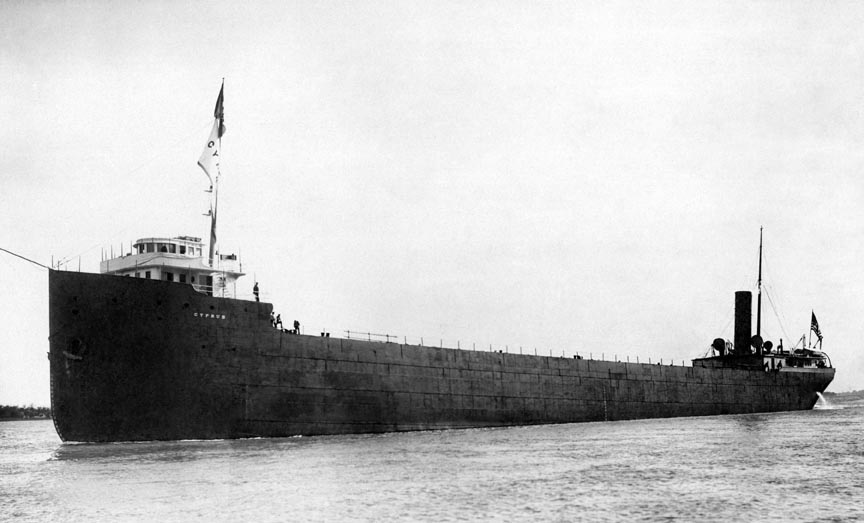
The SS Cyprus was launched on August 17, 1907. She was a steel-hulled steam freighter that sank only months after she launched. On that fateful day of October 11, 1907, Cyprus was on her second voyage hauling iron ore from Superior, Wisconsin, to Buffalo, New York, when she ran into northwesterly winds, which caused her to list.
According to the sole survivor, second mate Charles G Pitz, Cyprus capsized around 7:45 pm on October 11, 1907. Some of the crew members were able to get into the liferaft, but they kept flipping over, and eventually, all but Charles G Pitz, who tied himself to the raft, survived.
Freezing from hypothermia and exhaustion, Pitz miraculously made it to shore and collapsed. Fortunately, he was only half a mile away from the Deer Park Lifesaving Station.
The Cyprus was located on August 18, 2007, lying on her port side at a depth of 460 feet off of Deer Park. Her hull is entirely intact. Also, her name and port of call are still legible on her stern.
SS Bannockburn
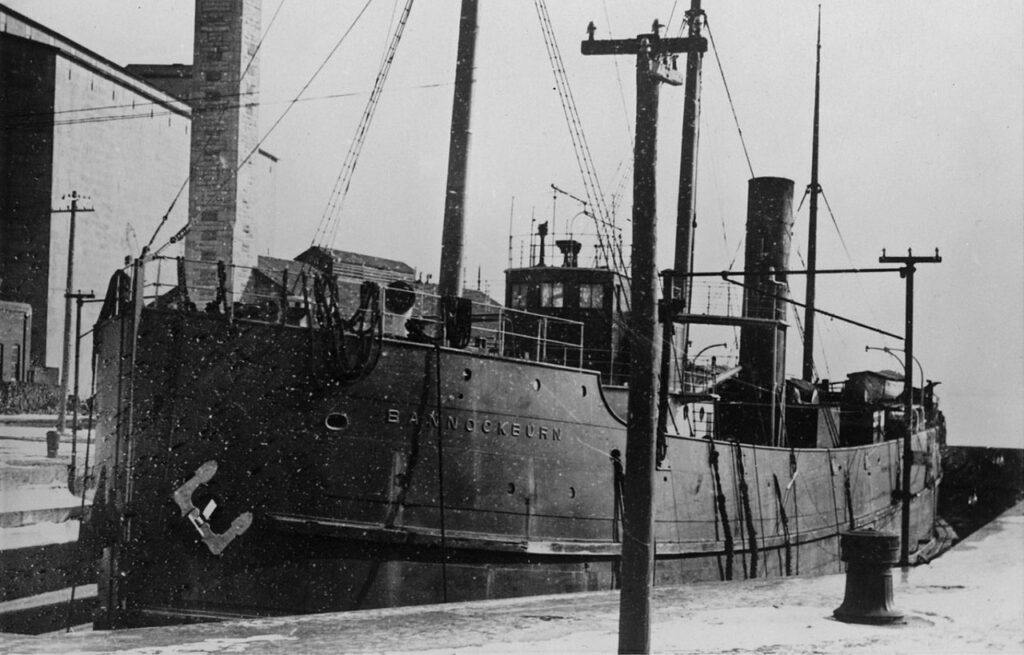
The Bannockburn was a steel-hulled Great Lakes Freighter out of Canada, and she became known as the “Flying Dutchman of the Great Lakes.” She sank quickly on November 21, 1902, beneath the waves of Lake Superior. With her entire crew of 20 onboard.
November of 1902 was a snowy wintery day out on the lake. She started the day at the Lakehead near Thunder Bay. She was carrying 85,000 bushels of wheat when she left the City of Fort William and headed to Georgian Bay in Lake Huron.
The last time she was officially seen was through the binoculars of Captain James McMaugh of the lake freighter the Algonquin, about 80 miles off of Keweenaw Point and 40 miles from Isle Royal. The Captain noticed she was on course.
The next day the Bannockburn was reported overdue at the Soo Locks. They believe she wrecked near Caribou Island, where there are many rough reefs. It was noted that the lighthouse light was turned off at the time. The only wreckage of the Bannockburn recovered was a lifevest that washed ashore.
Conclusion – Famous Lake Superior Shipwrecks
So as you can see, Lake Superior holds some fascinating shipwrecks that have become somewhat famous over the years. If you are interested in diving some of the Great Lakes wrecks, you should visit one of the thirteen Michigan Underwater Preserves, where you can dive on the wrecks and take glass bottom boat tours of some of the more shallow wrecks. Some of them also have museums you can visit as well.
I hope you enjoyed this article and if you have any questions or comments, please leave them below. I love hearing from my readers! Until next time happy wreck hunting!
